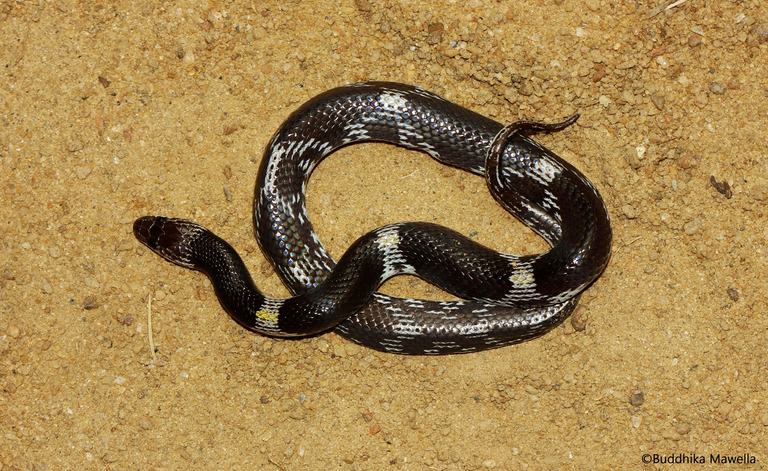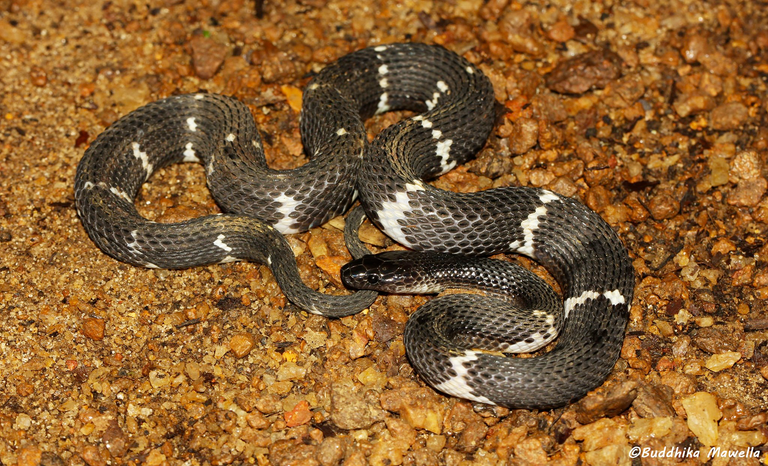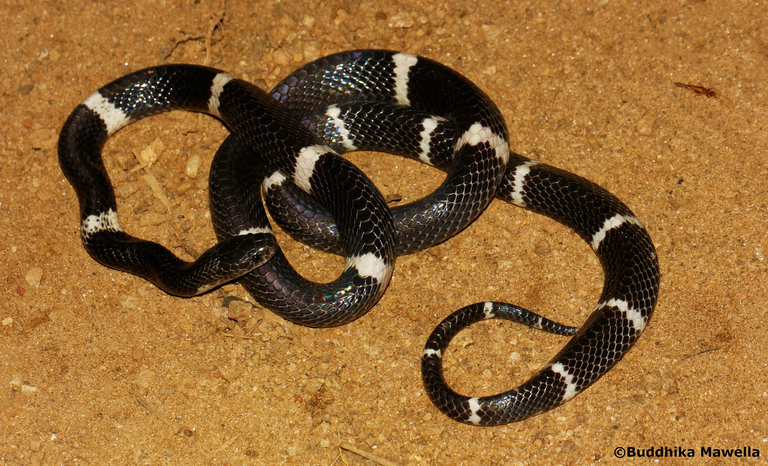As soon as you see the four snakes in these four photos, you immediately think that they belong to the same species. Because they all have a color pattern with white stripes on a black background. But these four are four different types of snakes.

In the first three photos, Lycodon nympha, Lycodon striatus and Lycodon carinatus are non-venomous snakes of the Colubridae family.
But the last photo is a highly poisonous snake. It is Bungarus ceylonicus of the Elapidae family. It has a very strong nurotoxic poison that is not anti-venom. They use that poison to paralyze their prey and to escape from large birds and mammals that come to eat them.
But why is there a set of non-poisonous snakes that have the same color pattern as a highly venomous snake?
This phenomenon is called Batesian mimicry. In this, a set of non-venomous snakes imitates the color pattern of the highly venomous snake.
This is how it happens. First, a highly venomous snake in a certain environment evolves with a clearly visible warning color pattern like this. When that happens, the predatory animals that depend on eating snakes like big birds get used to ignoring poisonous snakes with this color pattern. After some time, a set of non-venomous snakes in the same environment will be naturally selected by imitating that color pattern with a color pattern similar to the color pattern of the highly poisonous snake.
At a time like this, the natural selection process, which looks at the warning color pattern of the poisonous snake and copies it to a set of non-poisonous snakes, drives the predatory animals that ignore the color pattern of the poisonous snake and look for food.
In this way, when a set of non-venomous snakes start imitating a poisonous snake, the non-venomous species will gain an advantage and the poisonous species will suffer a disadvantage.
The concept of Batesian mimicry was first described by a naturalist named Henry Walter Bates in 1861, after he saw a similar event to the above-mentioned butterflies in the Amazon rainforest. That observation is that there is a special butterfly that has bodies that are poisonous or taste unpleasant to predators that are not eaten by predators. In the same environment, there is another set of butterflies that are not poisonous or unpleasant to their predators, but imitate the color pattern of the feathers of the previously mentioned butterfly. Darwin proposed the evolutionary theory of living things at the same time. It has been understood that the idea of Batesian mimicry matches with Darwin's idea at the same time.
When you look at it this way, you can think that a predatory animal is working like a photocopy machine that works very slowly in this incident. Because a color pattern in one animal species is copied to another animal species. But copying a color pattern from one feature to another is a very slow process. It must be a work that takes millions or tens of years.



#blurt #blurtstory #snakes #animal #beautiful #forest #sea #freshwater
I have snakes sith passion. Weather venomous or non-venomous, I just can’t stand to play with any.
Congratulations, your post has been curated by @r2cornell-curate. Also, find us on Discord
Felicitaciones, su publication ha sido votado por @r2cornell-curate. También, encuéntranos en Discord